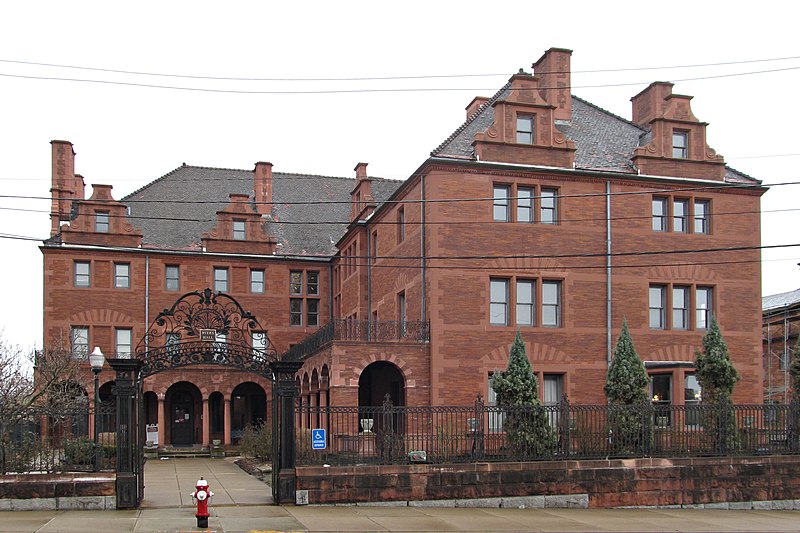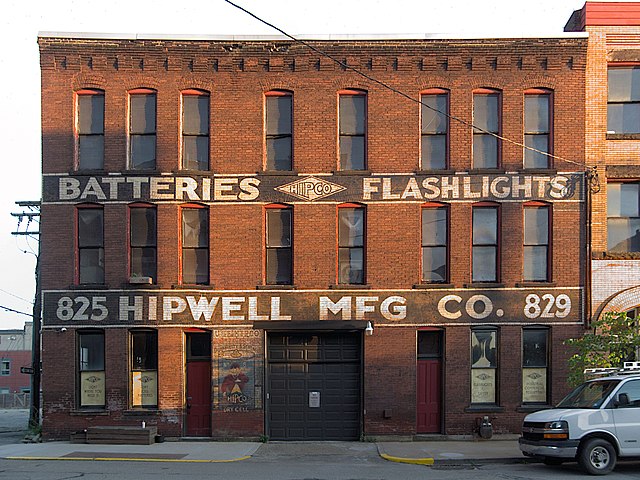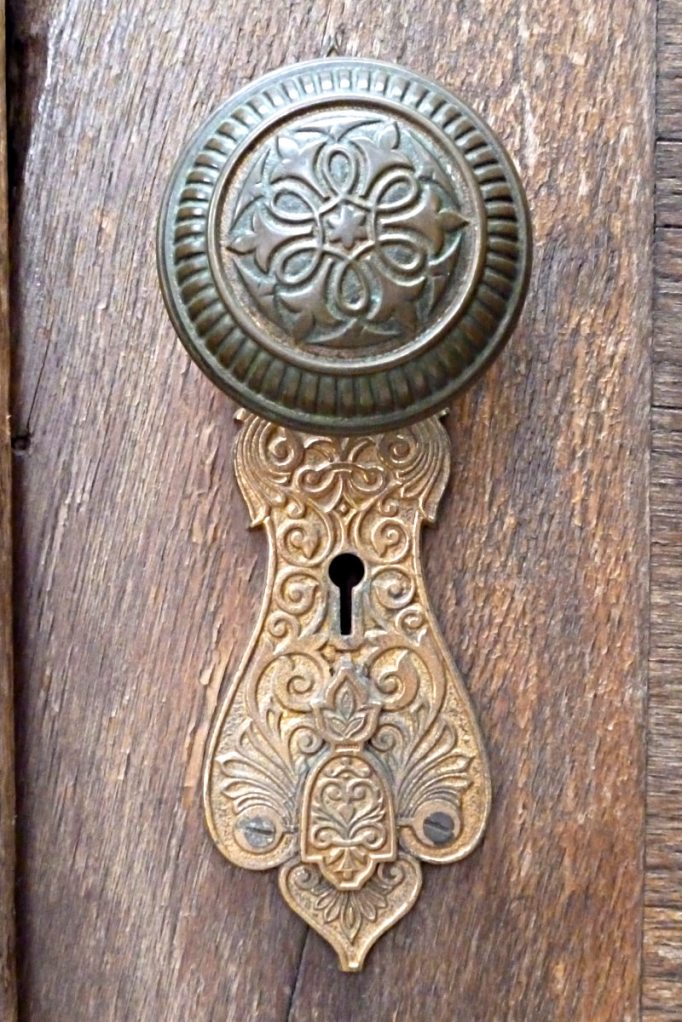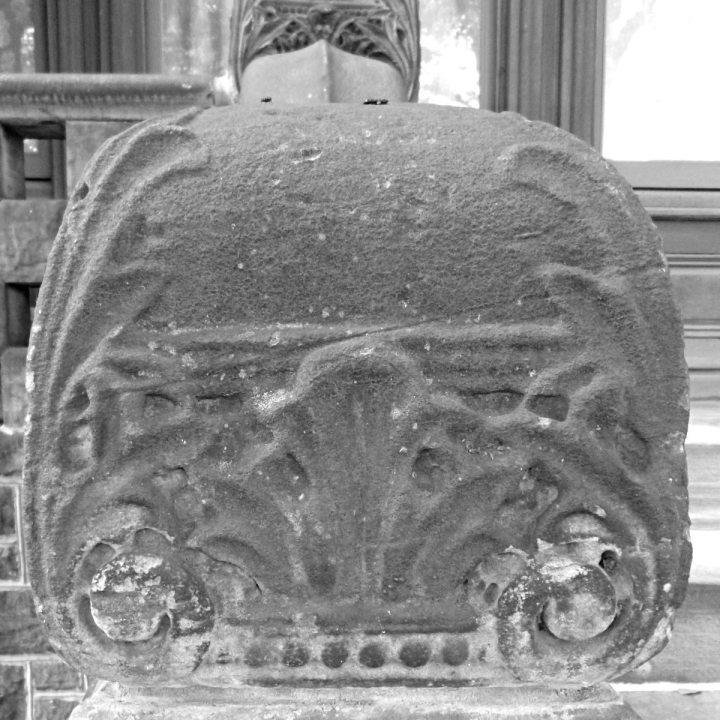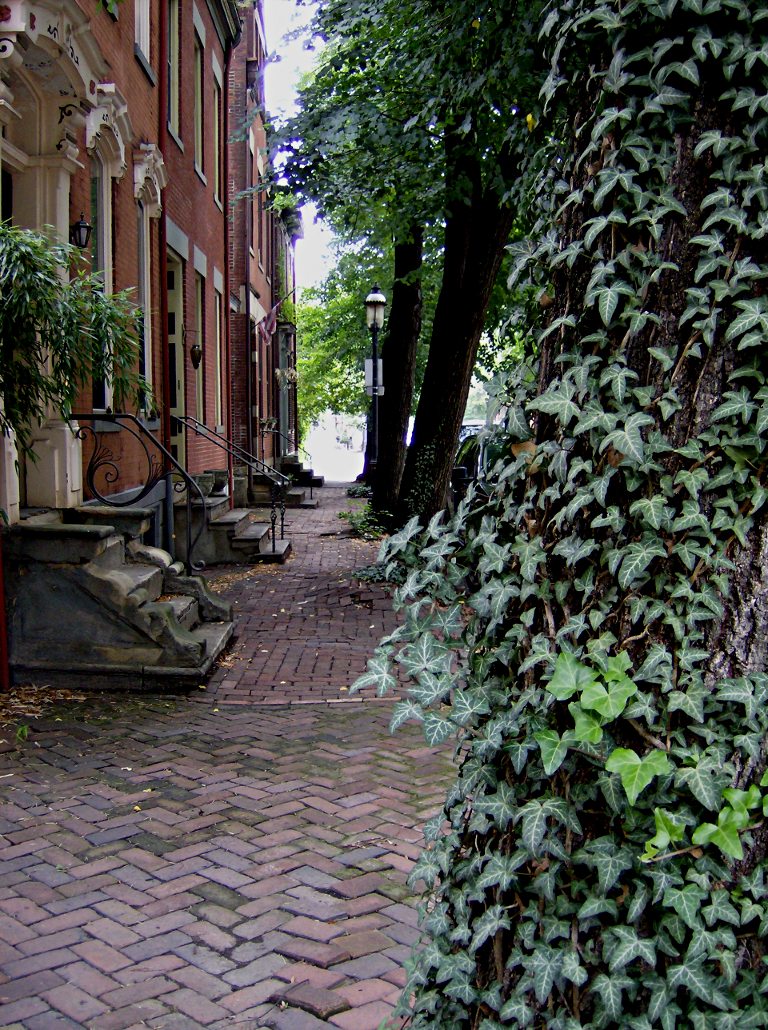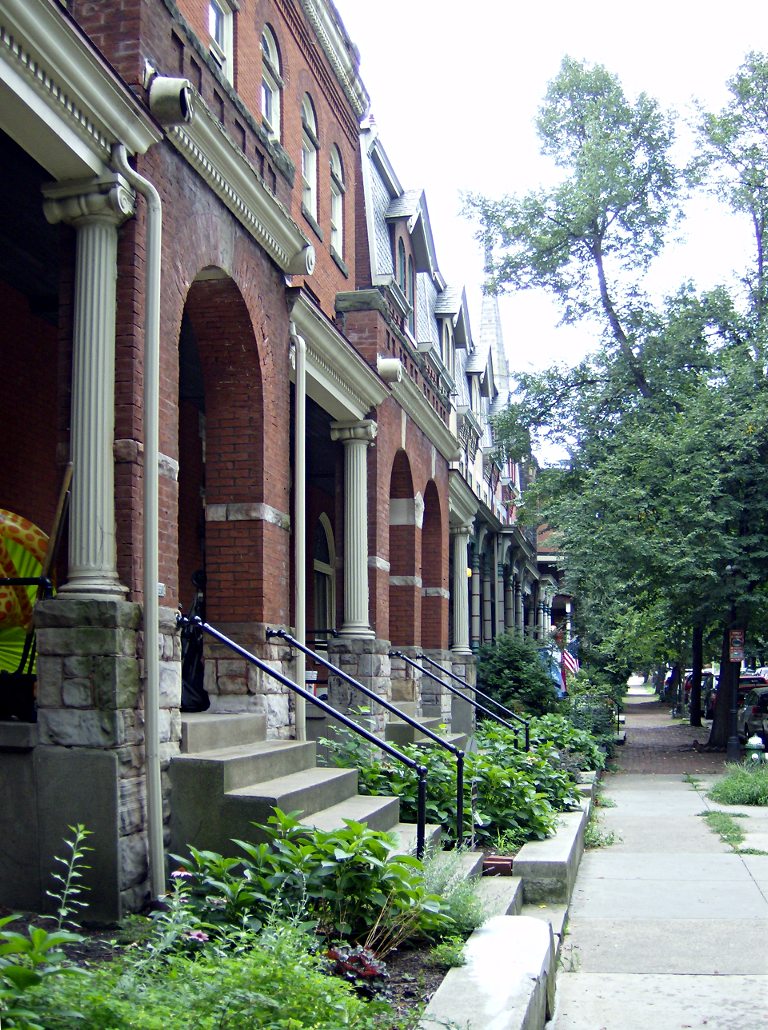
Half a block deep, four storeys tall, and one room wide—that is the adaptation railroad magnate Harry Darlington made to build a big mansion on a tiny lot. This narrow but substantial Romanesque pile was built in about 1890.
To the left of it is the Holmes house, about which more soon.

